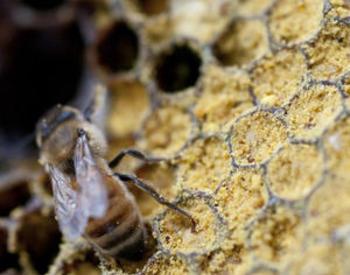Transcript
[Music]
For flowering plants to reproduce or make more of themselves, flowers need to be pollinated. The process is called pollination. For example, these are apple flowers. Generally, every living thing wants to make more of itself. Cats make kittens, birds lay eggs, and flowering plants make seeds, like these apple flowers. To make those seeds, a flower needs a few things. First, the flower needs some anthers, that is, a flower's male part. The anthers, these little structures the arrows are pointing to, make pollen, and lots of it. So much of it flies around in our air that the small particles we call pollen can make some people sneeze or have itchy eyes. Maybe you can relate.
A flower also needs a pistil. Not like a gun, this pistil is the female part of the flower, and it is often in the middle of the anthers, like here at the end of the arrow. Pistils are quite sticky on the end to keep the pollen from falling off. So, pollen needs to travel from the anther of the male part to the pistil, the female part. But most flowers need help doing this. Enter pollinators: flies, beetles, moths, butterflies, and some birds and bats. Some bats can pollinate, but bees are the best pollinators out there. Pollen clings to their furry bodies really well. Bees come in looking for nectar and pollen to eat. Pollen clings to the body, and the bee moves from flower to flower, depositing pollen onto the sticky pistil. The pollen fertilizes the pistil, and over time, seeds form at the bottom of the pistil. In this apple's case, the plant forms fruit around its seeds. Yummy fruit around seeds is a really great adaptation to get animals to move seeds around so the plant makes more of itself, and the process starts all over again.
But you know, plants aren't the only ones that benefit from pollination. All the pollinators gain nectar from the flowers, but bees are the only pollinators that actively collect pollen, and they do that because they feed their babies with pollen. Here's how it generally works: Bees collect pollen, and inside their nests, form pollen into pollen balls. Then, bees lay their eggs on the pollen balls. Once the eggs hatch into larvae, the larvae eat the pollen until it's time to make a pupae. Bee pupae are a lot like butterfly cocoons. Then, the bee will hatch from the pupae as an adult bee. These are the bees we see flying around. Then, the cycle starts all over again. There you go! Hopefully, this pollination primer was positively painless. Keep exploring, everyone!
[Music]
STEM Explore Science Club presents pollination in an easy to understand tutorial. It supports the Discovery Challenge: What's the Buzz about Bees. This video is part of the Greater Oregon STEM Hub Explore Science Club.



















